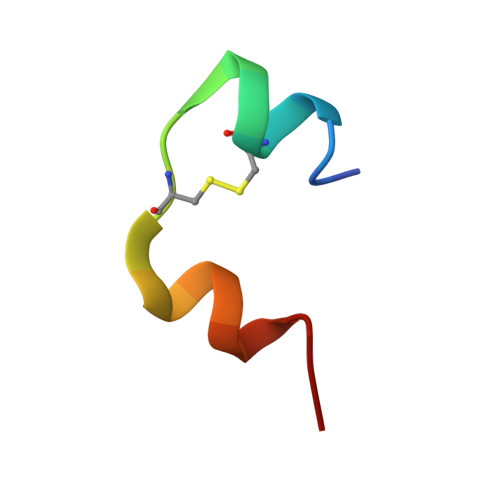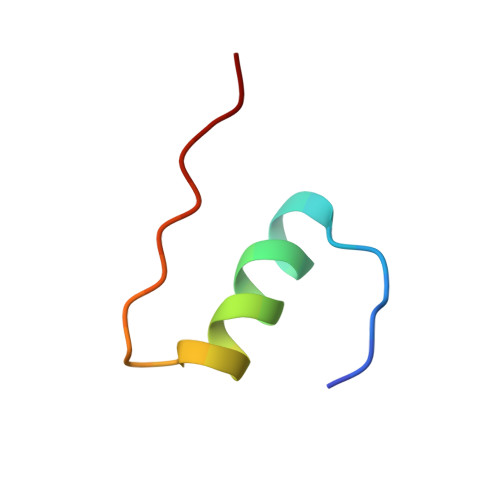How Insulin Binds: the B-Chain alpha-Helix Contacts the L1 beta-Helix of the Insulin Receptor.
Huang, K., Xu, B., Hu, S.Q., Chu, Y.C., Hua, Q.X., Qu, Y., Li, B., Wang, S., Wang, R.Y., Nakagawa, S.H., Theede, A.M., Whittaker, J., De Meyts, P., Katsoyannis, P.G., Weiss, M.A.(2004) J Mol Biol 341: 529-550
- PubMed: 15276842
- DOI: https://doi.org/10.1016/j.jmb.2004.05.023
- Primary Citation of Related Structures:
1T1K, 1T1P, 1T1Q - PubMed Abstract:
Binding of insulin to the insulin receptor plays a central role in the hormonal control of metabolism. Here, we investigate possible contact sites between the receptor and the conserved non-polar surface of the B-chain. Evidence is presented that two contiguous sites in an alpha-helix, Val(B12) and Tyr(B16), contact the receptor. Chemical synthesis is exploited to obtain non-standard substitutions in an engineered monomer (DKP-insulin). Substitution of Tyr(B16) by an isosteric photo-activatable derivative (para-azido-phenylalanine) enables efficient cross-linking to the receptor. Such cross-linking is specific and maps to the L1 beta-helix of the alpha-subunit. Because substitution of Val(B12) by larger side-chains markedly impairs receptor binding, cross-linking studies at B12 were not undertaken. Structure-function relationships are instead probed by side-chains of similar or smaller volume: respective substitution of Val(B12) by alanine, threonine, and alpha-aminobutyric acid leads to activities of 1(+/-0.1)%, 13(+/-6)%, and 14(+/-5)% (relative to DKP-insulin) without disproportionate changes in negative cooperativity. NMR structures are essentially identical with native insulin. The absence of transmitted structural changes suggests that the low activities of B12 analogues reflect local perturbation of a "high-affinity" hormone-receptor contact. By contrast, because position B16 tolerates alanine substitution (relative activity 34(+/-10)%), the contribution of this neighboring interaction is smaller. Together, our results support a model in which the B-chain alpha-helix, functioning as an essential recognition element, docks against the L1 beta-helix of the insulin receptor.
Organizational Affiliation:
Department of Biochemistry, Case Western Reserve School of Medicine, Cleveland OH 44106-4935, USA.















